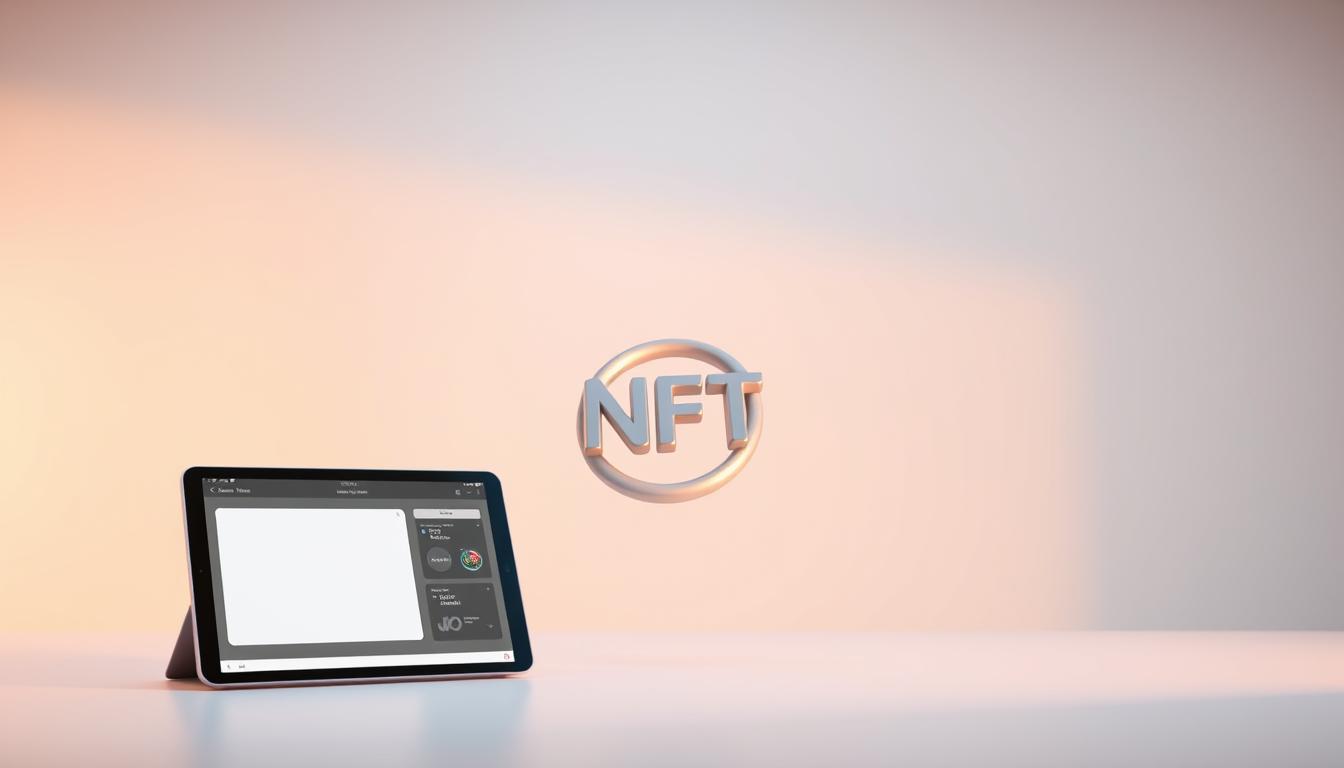Now Reading: Machine Learning Blockchain Network Optimization Techniques Explained
- 01
Machine Learning Blockchain Network Optimization Techniques Explained
Machine Learning Blockchain Network Optimization Techniques Explained

Two powerful technologies are coming together to create smarter digital systems. Blockchain enables direct, secure transactions between users without middlemen. This decentralized approach generates massive amounts of public information.
Advanced analytical methods thrive on large datasets. The transparency and volume of blockchain data create ideal conditions for these intelligent systems. This combination addresses traditional limitations in scalability and energy use.
Research shows growing interest in this field, with hundreds of studies published over 15 years. The integration offers practical benefits like improved transaction speed and enhanced security through pattern recognition. Systems become more adaptive to changing conditions.
Key Takeaways
- Blockchain’s decentralized nature produces vast amounts of publicly available data
- Advanced analytical methods require large datasets to perform effectively
- The combination addresses scalability and energy efficiency challenges
- This integration improves transaction throughput and security measures
- Systems become more responsive to dynamic network conditions
- Academic research shows significant growth in this field since 2008
- The synergy creates more efficient and adaptive digital infrastructure
Introduction to Blockchain and Machine Learning Integration
When decentralized record-keeping meets intelligent data processing, unprecedented capabilities emerge for modern applications. These two technological domains create powerful synergies through strategic combination.
The integration addresses fundamental challenges in both areas. Distributed ledgers need intelligent enhancements while analytical systems require secure data handling. This creates a mutually beneficial relationship.
Historical developments show this convergence evolving from basic cryptocurrency predictions to sophisticated consensus systems. Early applications focused on price forecasting models. Today’s implementations include autonomous security frameworks and adaptive protocols.
Key integration patterns include enhanced smart contracts that adjust parameters using real-time information. Anomaly detection systems identify threats within distributed networks. Efficiency algorithms improve protocol performance based on historical patterns.
The relationship works both ways. Intelligent algorithms improve ledger performance and security measures. Meanwhile, cryptographic systems enhance analytical applications through decentralized data access and transparent model governance.
This foundation establishes the framework for understanding technical implementations covered throughout this guide. The strategic combination creates more responsive and efficient digital infrastructure.
Understanding Blockchain Technology Fundamentals
Blockchain technology operates on principles that fundamentally change how information gets stored and verified. This system creates tamper-resistant records through cryptographic linking.
Blockchain Structure and Components
Three essential elements form every blockchain system. Blocks store transaction data along with unique cryptographic hashes. Each block connects to the previous one, creating an unbreakable chain.
Miners play a crucial role in validating new transactions. They solve complex mathematical puzzles to add blocks to the chain. Successful miners receive rewards for their computational work.
Nodes maintain complete copies of the entire ledger across the system. These distributed participants verify all transactions and blocks. They ensure consistency and security throughout the decentralized framework.
Consensus Mechanisms Explained
Consensus mechanisms enable agreement among all participants. Proof of Work requires significant computational effort to validate transactions. This approach provides strong security but consumes substantial energy.
Proof of Stake offers an alternative validation method. Participants lock cryptocurrency as collateral to verify transactions. This system reduces energy consumption while maintaining security.
Other mechanisms like Byzantine Fault Tolerance provide additional options. Each consensus strategy balances security, efficiency, and decentralization differently. The choice depends on specific application requirements.
Essentials of Machine Learning in Modern Technologies
Modern technological systems increasingly rely on intelligent data processing to enhance their capabilities. This field of artificial intelligence focuses on developing models that improve through experience rather than explicit programming.
Statistical methods enable computers to identify patterns and make predictions based on historical information. The approach transforms how systems handle complex decision-making tasks.
Supervised vs Unsupervised Learning
Supervised learning uses labeled datasets to train algorithms for specific predictions. Models learn from examples where correct answers are provided. This method excels at classification tasks and outcome forecasting.
Unsupervised learning discovers hidden structures in unlabeled information. Algorithms identify natural groupings and relationships without guidance. This approach reveals insights that might otherwise remain hidden.
Two additional paradigms complete the learning spectrum. Semi-supervised methods combine both labeled and unlabeled data. Reinforcement techniques focus on sequential decision-making through trial and error.
AI in Data-Driven Decision Making
Artificial intelligence processes vast quantities of information to extract actionable insights. Models analyze complex datasets to optimize operational parameters automatically. This capability transforms how organizations approach strategic planning.
The typical workflow involves several crucial steps. Data collection gathers relevant information from various sources. Preprocessing cleans and normalizes this material for analysis.
Feature extraction identifies the most relevant characteristics for model training. Algorithm selection matches the right tools to specific objectives. This systematic approach ensures reliable results across different applications.
Analyzing Blockchain Network Data for Optimization
Every interaction within cryptographic record-keeping frameworks generates detailed records suitable for analytical processing. These comprehensive datasets form the essential foundation for enhancing system operations and security measures.

Distributed ledgers produce diverse information types through various activities and participant interactions. The immutable nature ensures this information remains unchanged, creating reliable historical records.
Transaction Data and Smart Contract Logs
Payment records contain valuable structural elements that reveal usage patterns. Each entry includes sender and receiver identifiers, transaction amounts, timing stamps, and computational costs.
Contract execution logs capture detailed event emissions, function calls, and state modifications. These audit trails enable vulnerability detection and efficiency improvements through pattern recognition.
Major distributed systems process hundreds of thousands of daily interactions. This creates massive datasets often exceeding millions of individual data points.
Network topology information reveals connectivity patterns and participation frequencies. This data provides insights into system health and potential performance bottlenecks.
Data preparation presents unique challenges including cryptographic hash handling and temporal dependency management. Feature extraction techniques transform raw information into analyzable characteristics.
Proper examination forms the crucial foundation for subsequent enhancement applications. These include anomaly detection, security improvements, and operational refinements covered in later sections.
Smart Contracts and Distributed Ledger Innovations
Smart contracts represent a revolutionary leap in how agreements get executed digitally. These self-executing contracts have their terms written directly into code that runs on distributed ledger systems.
When predefined conditions are met, these contracts automatically execute without requiring intermediaries. This creates trustless transactions that are transparent and verifiable by all participants.
Ethereum’s introduction of smart contracts in 2015 marked a significant advancement. The platform provided a virtual computing environment and Turing-complete programming language for creating sophisticated decentralized applications.
These innovative contracts enable dynamic applications across multiple fields. Insurance policies can adjust premiums based on real-time risk data. Supply chain agreements optimize routes using traffic pattern information.
The integration of analytical methods creates adaptive contracts that respond to changing conditions. This combination enhances security through pattern recognition and anomaly detection.
Distributed ledger technology provides immutable records for all contract executions. This creates transparent audit trails that support regulatory compliance and dispute resolution.
These systems form the foundation for decentralized applications in healthcare, energy management, and financial services. The technology continues evolving toward more efficient and secure digital ecosystems.
Machine learning blockchain network optimization
Intelligent systems are transforming how decentralized networks operate through data-driven improvements. These analytical approaches create self-adjusting protocols that enhance overall system capabilities.

Security receives significant boosts from pattern recognition capabilities. Models identify unusual activities that may indicate threats. This proactive approach strengthens protection across distributed systems.
Methods and Benefits of Applying ML
Predictive analytics forecast transaction volumes and potential congestion. Systems can then allocate resources more effectively. This prevents bottlenecks before they impact users.
Consensus mechanisms become more efficient through behavioral analysis. Algorithms study node participation patterns to optimize validator selection. Dynamic parameter adjustments respond to changing network conditions.
Decentralized organizations benefit from informed decision-making processes. Analytical models examine historical voting data and proposal outcomes. This leads to more effective governance strategies.
Practical improvements include measurable performance gains. Some implementations reduce latency by over 30% during peak usage. Energy consumption drops significantly through smarter resource management.
These methods create adaptive systems that continuously self-improve. The combination delivers tangible benefits for scalability and operational efficiency.
Advanced Consensus Algorithms and Their AI Enhancements
Traditional consensus mechanisms face significant challenges that artificial intelligence can effectively address. These protocols struggle with scalability issues and energy consumption while maintaining security standards.
Next-generation solutions incorporate intelligent adaptations that respond to real-time conditions. This creates more resilient systems capable of handling dynamic network changes.
Adaptive Mechanisms in Consensus Protocols
Proof of Authority 2.0 (PoAh 2.0) represents a breakthrough in adaptive validation. This algorithm adjusts authentication processes based on data sensitivity and node behavior patterns.
Unlike traditional stake-based systems, PoAh 2.0 evaluates participant reliability through continuous monitoring. The protocol decouples validation rights from economic wealth accumulation.
Machine learning models analyze node performance to assign authority scores dynamically. These systems detect anomalous patterns and adjust participation weights automatically.
Adaptive mechanisms reconfigure parameters during adverse conditions like malicious attacks or connectivity failures. The protocol maintains stability without human intervention through intelligent adjustments.
Comparative advantages include reduced latency and improved throughput stability. AI-enhanced consensus achieves better performance metrics than static traditional algorithms.
These intelligent protocols create more efficient validation processes while enhancing overall system resilience. The integration represents a significant advancement in distributed ledger technology.
Leveraging Deep Reinforcement Learning in Blockchain Systems
Proximal Policy Optimization represents a breakthrough in creating self-adjusting consensus mechanisms for decentralized networks. This approach enables systems to learn optimal management strategies through continuous environmental interaction.
PPO and Dynamic Network Adjustments
PPO balances training stability with convergence efficiency through controlled regularization. The algorithm prevents destabilizing policy changes while learning adaptive validation strategies.
Systems represent network topology using directed graphs that capture participant relationships. This dynamic representation enables intelligent load redistribution across nodes.

The architecture modifies validation policies in real time without fixed parameters. It automatically penalizes anomalous behavior while maintaining stable throughput.
Real-Time Policy Adaptation Techniques
Trained models continuously monitor metrics and execute consensus adjustments dynamically. This autonomous approach responds to high-load scenarios and malicious attacks.
Quantitative results demonstrate 34% reduction in consensus latency under adverse conditions. The system achieves detection rates exceeding 0.90 for security threats.
Energy consumption decreases by approximately 16% during network congestion. This represents a paradigm shift from reactive to proactive system management.
Real-World Use Cases in Decentralized Applications
Across numerous industries, the practical fusion of intelligent algorithms with distributed ledgers is delivering tangible benefits. These real-world implementations move beyond theory into measurable improvements.
In supply chain management, these systems track goods using sensor data. They predict demand and verify product authenticity from start to finish.
Decentralized finance applications leverage this technology for risk assessment. They set interest rates dynamically and enable automated trading.
The healthcare sector uses this integration to securely store patient records. Analytical models then detect fraud and optimize treatment plans while protecting privacy.
Energy applications include peer-to-peer trading platforms. They balance grid loads and predict renewable energy output for efficient management.
| Industry | Core Application | Key Benefit |
|---|---|---|
| Supply Chain | Logistics & Traceability | End-to-end product verification |
| DeFi | Credit & Market Making | Reduced risk and dynamic pricing |
| Healthcare | Records & Fraud Detection | Enhanced security and treatment insights |
| Energy | P2P Trading & Grid Management | Optimized resource distribution |
These diverse use cases demonstrate the versatility of this integration. They validate the technology through improved efficiency, security, and user experience.
Security Enhancements Through Anomaly Detection and ML
Advanced threat identification transforms how we safeguard decentralized platforms from malicious actors. These intelligent systems analyze massive datasets to spot unusual activities that human monitoring might miss.
Research shows anomaly detection represents the most studied application in this field. Nearly half of academic papers focus on this critical security area.

Various threat types get identified through pattern analysis. Systems detect Sybil attacks, double-spending attempts, and smart contract vulnerabilities. Unusual transaction flows indicating money laundering also trigger alerts.
Fraud Detection and Cyber Threat Prevention
Financial systems benefit greatly from real-time fraud identification. Algorithms examine transaction sequences and user behaviors to flag suspicious activities.
Different analytical approaches provide comprehensive protection. Supervised models use labeled fraud examples for training. Unsupervised methods find outliers without prior knowledge.
Performance metrics demonstrate impressive accuracy rates. Detection exceeds 90% for certain attacks with minimal false alarms. This balance ensures security without disrupting legitimate operations.
Continuous learning allows systems to adapt to new threats. As attackers develop novel techniques, security measures evolve accordingly. This creates dynamic protection that improves over time.
Optimizing Transaction Throughput and Network Performance
Scalability challenges present the most significant barrier to widespread adoption of decentralized technologies. Intelligent algorithms analyze historical patterns to identify bottlenecks before they impact users.
These systems examine transaction volumes and node activity to predict congestion. They enable proactive adjustments like dynamic block sizing and intelligent prioritization.
The results demonstrate impressive improvements. One implementation maintained stable throughput while reducing consensus latency by 34% under high-load conditions.
Resource allocation becomes more efficient through continuous monitoring. Computational loads balance across participants, preventing individual overload while maximizing capacity utilization.
For deeper insights into analytical approaches, explore our guide to on-chain analytics for comprehensive market research. This methodology supports informed decision-making.
Stability metrics show convergence within 30 training iterations. The adapted protocol maintains robust performance even during topology changes, indicating predictable behavior.
Improving Scalability and Efficiency in Blockchain Networks
The quest for internet-scale distributed applications requires addressing core limitations in how decentralized platforms handle growth and resource demands. Traditional approaches like Proof of Work and Proof of Stake face significant constraints in transaction throughput and energy consumption.
Innovative protocols like S-PoDL demonstrate how analytical methods can reduce computational loads. This two-stage approach makes distributed systems viable for edge devices and IoT environments. The model achieves sustained energy reductions of approximately 16% during high-congestion periods.
Storage efficiency improves through intelligent data management strategies. Systems identify redundant information and predict optimal pruning schedules. This reduces storage requirements without compromising data availability.
Network bandwidth optimization represents another critical area. Analytical algorithms compress transaction data intelligently and predict synchronization patterns. These techniques maintain consistency while reducing traffic across distributed nodes.
Sharding and layer-2 solutions benefit from predictive pattern recognition. The technology determines optimal configurations and manages channel lifecycles effectively. This coordination minimizes overhead while maximizing scalability benefits.
These combined improvements enable enterprise-level transaction volumes and global-scale applications. The approach creates sustainable operations with reduced environmental impact through intelligent resource management.
Integrating Federated Learning for Data Privacy and Security
Federated learning emerges as a groundbreaking methodology that transforms how organizations develop intelligent systems without compromising sensitive information. This approach enables collaborative model training across distributed participants while keeping raw data localized.
Traditional analytical methods often require centralized data processing, creating privacy vulnerabilities and regulatory challenges. Federated learning addresses these concerns by allowing multiple parties to contribute to model development without sharing proprietary datasets.
Collaborative Model Training Across Nodes
In this architecture, each participant trains local models using their private data. Only model updates or gradients get shared with the network for aggregation. This preserves confidentiality while enabling collective intelligence development.
Distributed ledger technology provides the ideal infrastructure for this collaborative approach. It ensures immutable audit trails of model contributions and prevents malicious participants from corrupting the training process.
| Approach | Data Handling | Privacy Level | Collaboration |
|---|---|---|---|
| Traditional ML | Centralized aggregation | Low | Limited |
| Federated Learning | Local processing only | High | Extensive |
| Blockchain-Enhanced FL | Distributed with audit trails | Maximum | Trustless |
Applications span healthcare, finance, and defense sectors where data sharing restrictions would otherwise prevent collaborative intelligence development. Hospitals can jointly train disease prediction models without exposing patient records.
Security enhancements include cryptographic protection for model updates and smart validators that verify contribution quality. These measures create trustworthy, privacy-preserving analytical ecosystems for sensitive industries.
Innovative Use Cases in DeFi and IoT Applications
Decentralized finance and industrial IoT systems demonstrate the practical power of combining distributed ledgers with analytical intelligence. These frontier implementations solve industry-specific challenges through customized technological approaches.
In financial services, algorithmic credit scoring assesses borrower risk without traditional institutions. Dynamic interest rate models respond to market conditions automatically. Automated market makers optimize liquidity provision using real-time data analysis.
Industrial IoT applications benefit from secure device identity management. Connected sensors record information immutably while analytical methods coordinate device operations. Predictive maintenance scheduling and anomaly detection enhance operational efficiency.
Smart grid implementations enable peer-to-peer energy trading among prosumers. These systems predict renewable generation patterns and optimize grid load balancing. Real-time supply-demand analytics enable dynamic pricing strategies.
Key security enhancements address resource constraints on edge devices. Lightweight protection solutions suit power-limited IoT deployments. These measures protect against vulnerabilities in fog computing layers.
- Supply chain tracking with quality issue detection
- Healthcare monitoring with personalized treatment recommendations
- Inventory management optimization through real-time data
These applications represent transformative value across financial and industrial sectors. They enable new business models and create intelligent autonomous systems.
Emerging Trends and Future Directions in Blockchain Optimization
Next-generation advancements in distributed computing are emerging from the synergistic relationship between cognitive computing and immutable record-keeping. The field continues to evolve with promising innovations and unresolved challenges.
Researchers identify several critical areas requiring further investigation. These gaps represent opportunities for significant breakthroughs in distributed system capabilities.
Research Gaps and Standardization Challenges
Current approaches lack comprehensive frameworks for evaluating intelligent distributed systems. The absence of common metrics hinders comparative analysis across different implementations.
Cross-chain interoperability presents another major challenge. Intelligent routing between heterogeneous ledgers requires sophisticated analytical approaches. Security maintenance across diverse protocols remains a complex problem.
Standardization efforts face obstacles in establishing universal benchmarks. Regulatory frameworks for autonomous decision-making systems are still in early development stages.
Next-Generation AI-Blockchain Integrations
Future systems may incorporate semantic consensus mechanisms that understand transaction context. These intelligent protocols could interpret intent rather than just validating technical correctness.
Privacy-enhancing technologies like zero-knowledge proofs combined with analytical methods offer new possibilities. They enable verification without exposing sensitive training data.
Adversarial robustness represents a critical research priority. Future systems must defend against sophisticated attacks targeting analytical models and consensus mechanisms.
Conclusion
This technological partnership represents more than incremental improvement—it signifies a fundamental shift toward autonomous digital ecosystems. The combination creates secure, efficient systems that adapt dynamically to changing conditions.
Organizations gain tangible benefits including enhanced security through pattern recognition and improved resource allocation. These intelligent systems demonstrate measurable performance gains in real-world applications.
Implementation requires careful consideration of specialized expertise requirements and potential algorithmic bias. Continued research and standardization efforts will help maximize benefits while addressing challenges.
The convergence points toward a future where decentralized platforms operate with unprecedented intelligence and responsiveness across industries.
FAQ
What is the main goal of integrating artificial intelligence with blockchain technology?
The primary goal is to enhance the performance and security of distributed ledger systems. By applying AI algorithms, these networks can become more efficient, scalable, and intelligent in managing transactions and data.
How can machine learning improve the security of blockchain networks?
It significantly boosts security through advanced anomaly detection. AI models analyze transaction patterns and node behavior to identify potential fraud or cyber threats in real-time, preventing malicious activities.
What role do consensus algorithms play in this integration?
Consensus mechanisms are vital for maintaining agreement across nodes. AI can optimize these protocols, making them adaptive to network conditions. This improves the overall efficiency and energy consumption of the system.
Can this technology help with data privacy in applications like DeFi?
Absolutely. Techniques like federated learning allow for collaborative model training without exposing raw data. This is crucial for financial services and IoT applications where information sensitivity is high.
What are some real-world applications of these optimized systems?
They are already being used in supply chain management, decentralized finance (DeFi) platforms, and smart contracts. These applications benefit from increased throughput, better management, and enhanced analytical capabilities.
What future trends are emerging in AI and distributed ledger integration?
Key trends include the development of next-generation adaptive mechanisms and tackling research gaps for standardization. The focus is on creating more autonomous and scalable systems for wider adoption.














